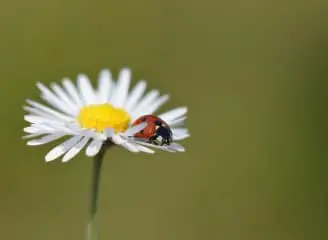There are a number of reasons why you might see a Ladybug on a flower or a plant. We’re going to explore the question – are ladybugs pollinators? But the first thing to say is if you do see one then great, leave them alone so they can get on with some important jobs for us. One of which is pollinating flowers.
Are Ladybugs Pollinators?
Yes, Ladybugs are pollination agents for backyards and agriculture. Like many Beetles, pollen sticks to them and then transfers to other flowers. Ladybugs have other reasons for being on flowers, but pollination is a great side effect. It’s another reason why ladybugs are considered beneficial insects.
So let’s look at the reasons why ladybugs might be on a flower and how that helps pollination… and us. And what does the ladybug get out of this arrangement?
Quick Quiz
How Fast Can a Ladybug Fly?
9mph, 19mph, 29mph, 39mph
Find the Answer Here
Are Ladybugs Pollinators – How Ladybugs Pollinate
Pollination occurs when pollen from flowers and plants that are ripe for transfer, sticks to the outer body of a ladybird as well as its underside and legs.
The ladybug in actual fact is just going about her business, but the great side effect is that there’s a chance the pollen she is carrying will be rubbed off when she visits another flowering bloom.
At that point, she will collect more pollen from that flower, and so the cycle continues.
This is even more likely in a slightly damp environment as ladybug shells often collect tiny raindrops which can help to hold pollen.
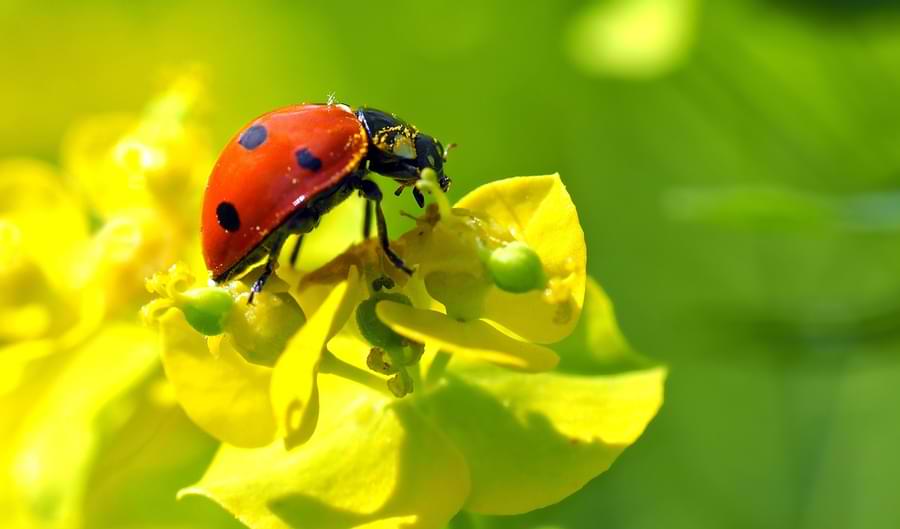
What Do Ladybugs Get in Return for Pollinating?
Unlike Bees, ladybirds do not set out to collect nectar, in so doing they do not always get or need the nectar from the flowering bloom. However, ladybugs do eat Nectar as a supplement to their diet, so it’s there is often a trade made with the flower for nectar.
The main reason ladybugs will be on and around flowers is to look for prey, mainly soft-bodied insects that they hunt constantly and which form the main part of their diet.
Nectar is an occasional supplement but it would not normally sustain most ladybugs as they are carnivores. Find out more about What ladybugs Eat.
Are Ladybugs Good Pollinators?
You might refer to ladybugs as accidental pollinators, they’re not as good as bees, but that is because they’re not aiming directly to get the nectar from flowers, and so will not travel directly from one flower to the next.
But suffice it to say they play their part in ensuring a reasonable amount of pollen transfer takes place per ladybug.
This is why they’re called beneficial insects, why they’re good for our backyards, and important to humans in many ways.
Quick
A Group of Ladybugs is called a ‘Loveliness of Ladybugs’
Find out more Surprising Ladybug Facts
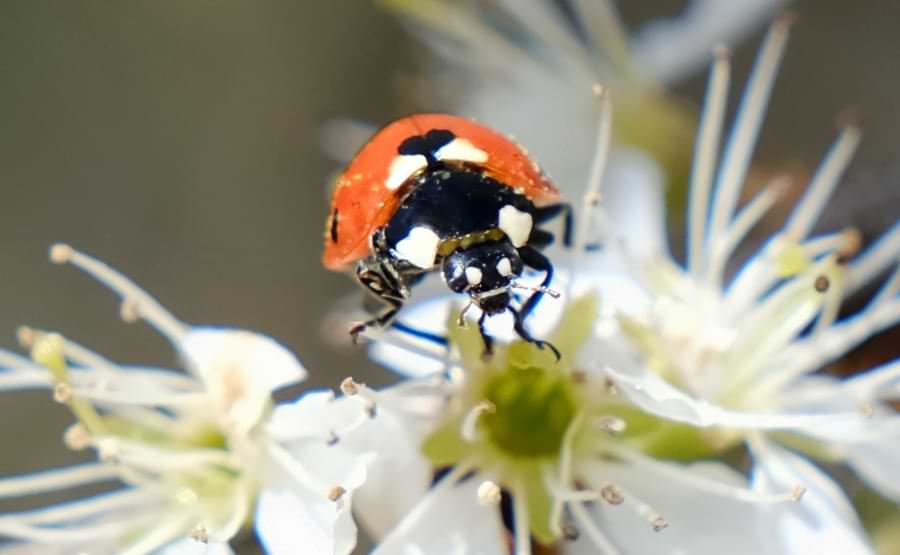
What Plants Do Ladybugs Pollinate?
To consider which plants ladybugs will pollinate we really need to look at why the ladybug is likely to visit that plant. The main reason is to look for their normal, natural food substances.
For that, we need to look at which plants, and the creatures they predate are likely to be. I’ve written an article on this already called 52 Plants That Ladybugs Love. I’m sure there are many more but I chose the most popular ones
- Angelica
- Beans
- Cilantro
- Dill
- Feverfew
- Gardenias
- Honeydew
- Juniper
- Marigolds
- Orchids
- Peas
- Roses
- Sunflowers
- Tomatoes
- Yarrow
See my Full List Here
Do Ladybugs Pollinate Flowers?
Yes, in fact, you’ll see that many in the list above are flowering plants that produce pollen. Ladybugs will attract pollen from any flowering buds and shrubs they come into contact with.
I guess except for venus fly traps! But who knows!
Joking aside, you can see from the image below this ladybug has attracted Pollen to them and will hopefully transfer this to another flower or bud they come in contact with.
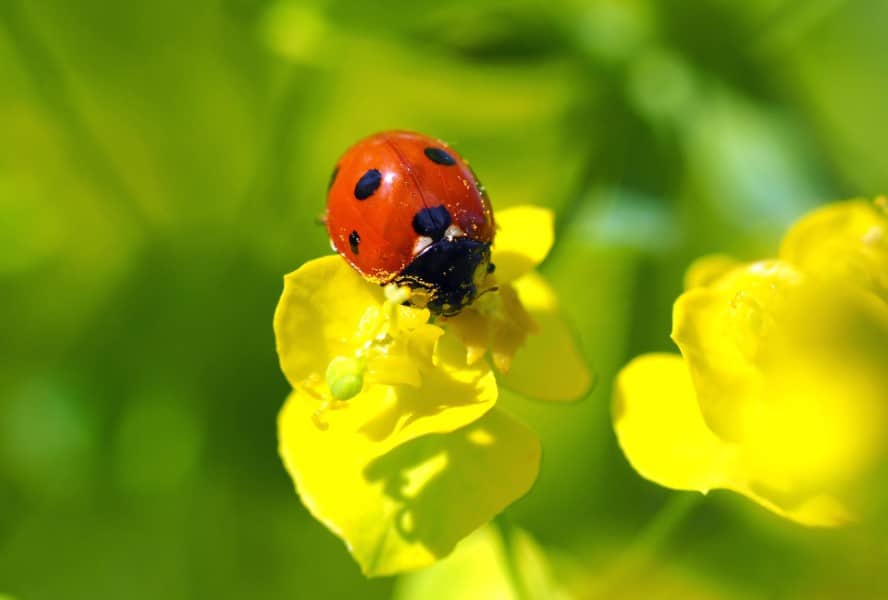
Do Ladybug Larvae Pollinate
Larvae of Ladybugs are more voracious predators than adult ladybugs themselves, however, until they turn into Pupas and then become adults they’re unable to fly.
This makes getting around more difficult. So it figures that they’re unlikely to travel the kinds of distances and places that ladybug adults do.
Eggs of ladybug Larvae are often laid and hatch near a readily available source of food. Add to this that a larva’s job is to find a good source of food and eat as much of it as possible.
This means they’re less likely to venture onto flower heads and blooms to find these types of food. Plus they’re then less likely to travel to many other plants and flowers to transfer it.
That said, it’s not impossible and I’m sure that Larvae play some role in the transfer of pollen, just to a lesser degree.
Are Ladybugs Important Pollinators?
Hands down our best and most productive pollinators are bees.
The fact that they actively hunt for nectar, coupled with their furry bodies capable of carrying lots of pollen particles makes them the most ideal and widespread pollinators on the planet. Without bees, life for humans would be extremely difficult.
Although we know that ladybugs are no comparison when it comes to Bees, it’s unknown though how ladybugs compare with or against other insects when it comes to their effectiveness in pollination.
I would certainly say alongside beetles in general, they’re in or around the top 10 list of pollination agents, alongside the likes of wasps, ants, butterflies, moths, midges, and flies.
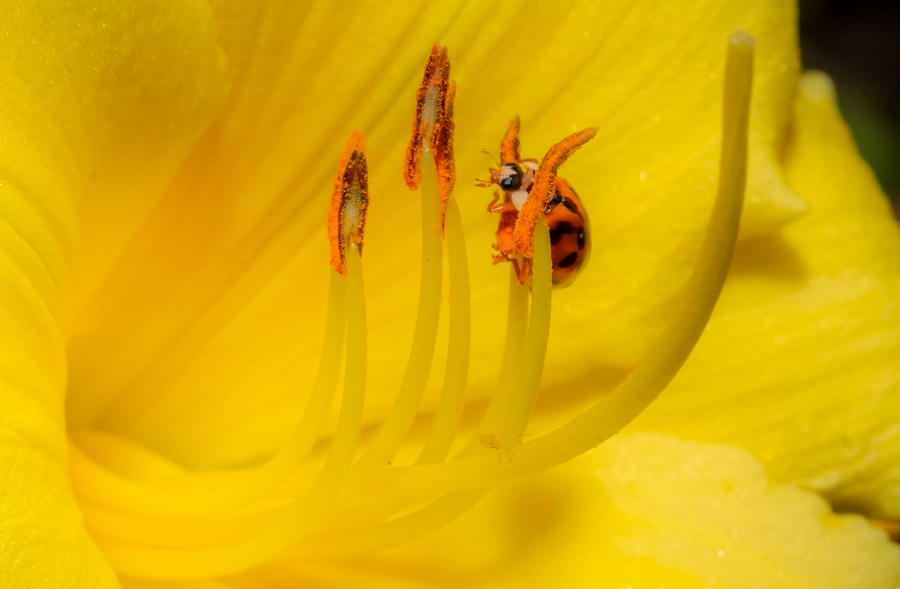
Are Ladybugs Pollinators – Conclusion
They’re important to us in so many ways, the question is are we looking after them enough, are we creating the right habitats for them to thrive in? Are we responsibly introducing the right varieties into the right places to make them sustainable?
Ladybugs are far from going extinct and certainly are not near the danger levels that Bees face. But we don’t want them to get to that point for many reasons.
I say, let’s keep putting in the plants and habitat that attracts them and nature will do the rest for us. We love mother nature, she is amazing.
Are Ladybugs Pollinators? – Related Questions:
Ladybug with black tail You may from time to time come across a ladybug with what appears to be a black tail. This will actually be its wings protruding out the back of its shell (Elytra) it may not have fully folded its wings. Possibly because it is a newly hatched ladybug, it is injured, or possibly getting old.

